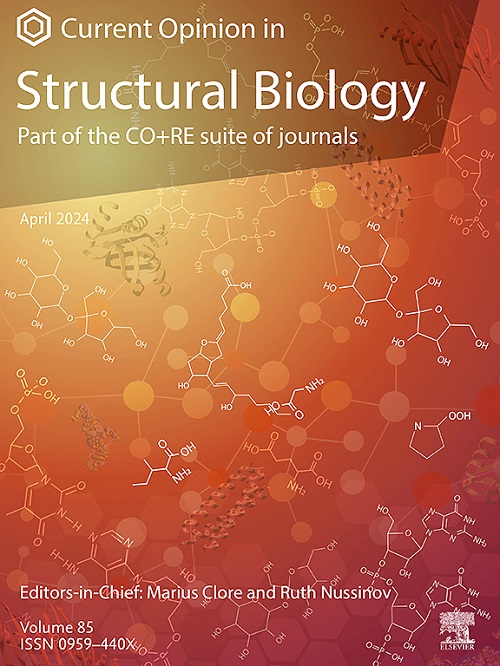蛋白质折叠与设计的人工智能方法
IF 6.1
2区 生物学
Q1 BIOCHEMISTRY & MOLECULAR BIOLOGY
引用次数: 0
摘要
机器学习已经彻底改变了蛋白质结构的预测和设计。这篇综述讨论了目前蛋白质折叠的方法和反折叠的挑战。像AlphaFold2 (AF2)、RoseTTAFold和ESMFold这样的模型擅长利用进化信息来准确预测蛋白质结构,同时仍在努力捕捉蛋白质折叠的物理原理。它们对蛋白质设计的重新利用导致了诸如rf扩散、af2设计和宽松序列优化等创新。ProteinMPNN和ESM-IF基于结构设计序列,因此它们经常被称为“逆折叠”方法。通过研究当前蛋白质设计方法和指标的潜力和局限性,我们提供了开发完全表征与氨基酸序列相关的能量景观模型的观点。这些进步将使更准确的结构预测和具有特定构象动力学的蛋白质设计成为可能,潜在地改变我们为生物技术应用设计新型蛋白质的能力。本文章由计算机程序翻译,如有差异,请以英文原文为准。
Artificial intelligence methods for protein folding and design
Machine learning has revolutionized protein structure prediction and design. This review discusses current methods for protein folding and inverse folding challenges. Models like AlphaFold2 (AF2), RoseTTAFold, and ESMFold excel at leveraging evolutionary information to accurately predict protein structures while still struggling to capture the physics of protein folding. Their repurposing for protein design has led to innovations such as RFdiffusion, AF2-design, and relaxed sequence optimization. ProteinMPNN and ESM-IF design sequences based on structure, so they are frequently referred to as “inverse folding’ methods. By examining the potential and limitations of current protein design methods and metrics, we provide perspectives on developing models that fully characterize energy landscapes associated with amino acid sequences. Such advances would enable more accurate structure prediction and the design of proteins with specified conformational dynamics, potentially transforming our ability to engineer novel proteins for biotechnological applications.
求助全文
通过发布文献求助,成功后即可免费获取论文全文。
去求助
来源期刊

Current opinion in structural biology
生物-生化与分子生物学
CiteScore
12.20
自引率
2.90%
发文量
179
审稿时长
6-12 weeks
期刊介绍:
Current Opinion in Structural Biology (COSB) aims to stimulate scientifically grounded, interdisciplinary, multi-scale debate and exchange of ideas. It contains polished, concise and timely reviews and opinions, with particular emphasis on those articles published in the past two years. In addition to describing recent trends, the authors are encouraged to give their subjective opinion of the topics discussed.
In COSB, we help the reader by providing in a systematic manner:
1. The views of experts on current advances in their field in a clear and readable form.
2. Evaluations of the most interesting papers, annotated by experts, from the great wealth of original publications.
[...]
The subject of Structural Biology is divided into twelve themed sections, each of which is reviewed once a year. Each issue contains two sections, and the amount of space devoted to each section is related to its importance.
-Folding and Binding-
Nucleic acids and their protein complexes-
Macromolecular Machines-
Theory and Simulation-
Sequences and Topology-
New constructs and expression of proteins-
Membranes-
Engineering and Design-
Carbohydrate-protein interactions and glycosylation-
Biophysical and molecular biological methods-
Multi-protein assemblies in signalling-
Catalysis and Regulation
 求助内容:
求助内容: 应助结果提醒方式:
应助结果提醒方式:


